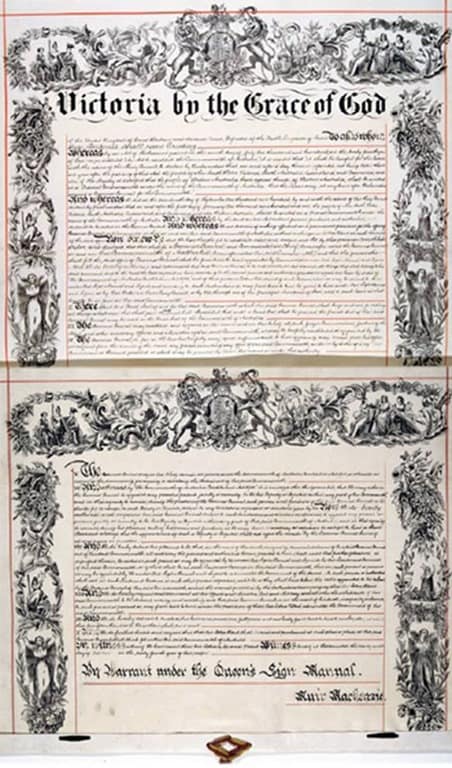The US Patent and Trademark Office (USPTO) has announced plans to implement paperless patents, ending the long tradition of “letters patent” with their embossed seals.
As Britannica explains, “letters patent” are a form of grant by the British sovereign to the “patentee” of some “dignity, office, privilege, franchise, or monopoly, including monopoly rights in an invention”:
Letters patent derive their name from the fact that, as Sir William Blackstone said, “they are not sealed up, but exposed to view, with the great seal pendant at the bottom, and are usually addressed by the sovereign to all the subjects of the realm.” They derive their authority from being issued under the great seal, except in those cases (which include patents for inventions) where they are issued under some other seal. Historically, letters patent were recorded in the patent rolls in the Record Office or the Chancery Enrollment Office, so that all subjects of the realm could read and be bound by their contents. In this respect, they differ from certain other letters of the sovereign directed to particular persons and for particular purposes, which, not being proper for public inspection, are closed up and sealed on the outside, and are thereupon called writs close (litterae clausae) and are recorded in the close rolls.
As in the example in the picture above, “letters patent” could be used to confer a variety of rights and not only rights in inventions. Over the years, however, the term “patents” has come to refer primarily to intellectual property rights associated with inventions.
Modern patent law dates back to at least 1450 when patents were granted in the Republic of Venice for a term of ten years and primarily dealt with glassmaking, which continues to be a major industry in Venice today. The Venetian Patent Statute of 1474 was one of the earliest patent laws in the modern world.
Some forms of patent protection may be much older. According to Wikipedia,
There is some evidence that some form of patent rights was recognized in Ancient Greece. In 500 BCE, in the Greek city of Sybaris (located in what is now southern Italy), “encouragement was held out to all who should discover any new refinement in luxury, the profits arising from which were secured to the inventor by patent for the space of a year.” Athenaeus, writing in the third century CE, cites Phylarchus in saying that in Sybaris exclusive rights were granted for one year to creators of unique culinary dishes.
The illustrations included with patent applications, which become part of the issued patent, have sometimes qualified as works of art. As Wired lamented,
Since the United States Patent & Trade Office opened in 1790, it has required that every patent be accompanied by an illustration depicting the applicant’s invention. But in the past 222 years, patent drawings have changed, degrading from detailed works of art to simplistic line drawings that barely qualify as illustrations. Whereas patent drawings from the 1800s and even early- to mid-1900s featured artistic techniques like shading, multiple perspectives, and texture, today’s patent drawings are often embarrassing doodles at best.
Until recently, US patents have been both filed as, and issued as, paper documents. But this is changing. In 2001, the USPTO introduced an electronic patent filing system.
As the Federal Register explains,
Currently, the USPTO issues “letters patent” (hereafter, patents) as paper patents under the seal of the USPTO, by virtue of being bound with a cover sheet that has both an embossed seal and the signature of the USPTO Director.
Under the proposed change, patents would no longer be automatically issued on paper but would be issued electronically and could be viewed via the Patent Center and Patent Application Image Retrieval system (PAIR).
Patentees will still be able to order official paper copies of their patents, with an embossed gold seal and the director’s signature, for $25 each.
Anyone can comment on the proposed change to paperless patents until February 14, 2021, via the Federal eRulemaking Portal at www.regulations.gov.
Just like the haiku above, we like to keep our posts short and sweet. Hopefully, you found this bite-sized information helpful. If you would like more information, please do not hesitate to contact us here.


